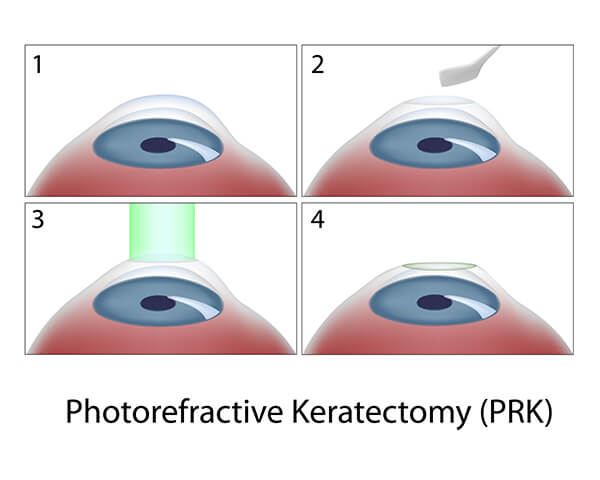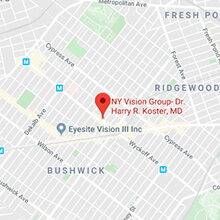PRK and EPI-LASIK, collectively known as surface ablation procedures, are vision correction options for patients who are not ideal candidates for LASIK because of a pre-existing dry eye condition or thin corneas. In LASIK, a flap is created in the cornea which decreases sensation and may worsen dry eye symptoms. PRK or EPI-LASIK may be better treatment options for those with moderately dry eyes because fewer corneal nerves are affected when compared to LASIK. In addition, the flap created in LASIK may weaken the cornea’s stability in patients with thin corneas and may eventually lead to the cornea changing shape with a return of nearsightedness and irregular astigmatism. The range of correction with PRK and EPI-LASIK is similar to standard LASIK. However, since less corneal tissue is disrupted with PRK and EPI-LASIK, thinner corneas can be treated. LASEK is another option for patients with corneas that are too thin or too steep for LASIK.
Learn about the Vision Correction Experience from a real patient, Michelle
The Procedure
PRK has the longest track record in the field of laser vision correction with more than 20 years of results worldwide. It differs from LASIK in that no flap is created. Instead, the thin surface layer (epithelium) of the cornea is removed in sections prior to applying the laser pulses. EPI-LASIK is a variation of PRK whereby the epithelium is removed as a continuous sheet, using a mechanical instrument called an epi-keratome. Again, no flap is created.

In either PRK or EPI-LASIK, after the epithelial layer is removed and the laser correction of the eye occurs, a specialized bandage contact lens is placed on the eye to promote comfort and healing. After two to three days a new layer of the epithelium is regenerated by the eye and the bandage is removed. Custom laser treatments are also available with PRK or EPI-LASIK, and research indicates that when doing custom laser treatments, PRK and EPI-LASIK may actually provide superior results to LASIK.
LASEK
LASEK is an eye surgery that combines the benefits of PRK and LASIK. In LASEK a shallow layer of the cornea is lifted by an ultra-thin blade. Alcohol is then used to further loosen this layer and, after this layer is loosened and lifted, a laser is used to reshape the remaining surface of the cornea. Because the layer of the cornea that is lifted during the LASEK procedure is much thinner than a traditional LASIK flap, this procedure is used mostly for patients with corneas that are too thin or too steep for LASIK.
For any of these procedures, the total surgical time is about 5 minutes per eye. After a brief rest, patients leave the Laser Center wearing sunglass. Because vision is initially blurry, we prefer that the patient be accompanied home. There is discomfort after the procedure, usually tearing, light sensitivity and a sensation that there is something in the eye. Pain-relieving eye drops and over the counter pain relievers alleviate most of the discomfort.
A significant advantage of PRK, EPI-LASIK, and LASEK over LASIK is the reduction of risks associated with a corneal flap. However, a significant disadvantage of this technology is the slow recovery and longer period of eye discomfort. With LASIK, typical visual recovery is about 90% in one day, and most people experience little or no pain. With EPI-LASIK and PRK, typical visual recovery takes about a week and eye discomfort can last several days as well. In any vision correction procedure, vision typically continues to improve for many weeks after the procedure.
Side Effects
More than 99% of patients obtain vision within two lines of 20/20 and can perform exceedingly well in most activities. The side effects associated with PRK and EPI-LASIK are usually temporary, but some can be chronic. The most common side effects are dry eye, nighttime glare, and the need for a fine-tuning or enhancement of the procedure.
The goal of refractive surgery, whether it be LASIK, PRK or EPI-LASIK, is to eliminate or reduce dependency on glasses or contact lenses, but the results are not guaranteed. Dr. Koster and the staff at the NY Vision Group will discuss more details with you, and answer any questions, at your consultation so that you can make an informed decision. We are dedicated to finding the best vision solution for our patients, and help them lead healthier richer lives.
For more information about LASIK in New York, please do not hesitate to contact our LASIK coordinator at 212.243.2300.




